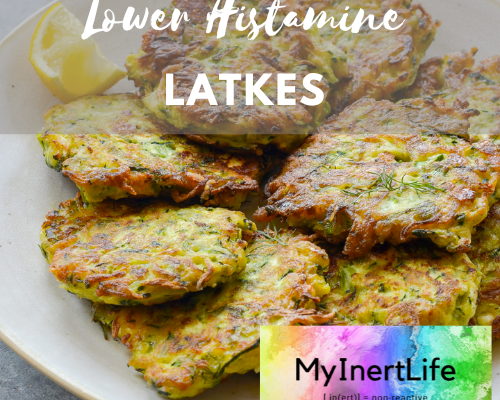Here is day 5 backpacking the SHT, the next installment in my journey on the Superior Hiking Trail with a chronic condition called MCAS.
As an Amazon Associate, I earn from qualifying purchases.
Table of Contents
What is MCAS?
Mast Cell Activation Syndrome (MCAS) is a chronic condition that affects all organ systems. MCAS is serious and disabling and people with MCAS experience often significant and debilitating symptoms daily, including anaphylaxis, which can be fatal.
MCAS is often found in combination with other chronic conditions such as Ehlers-Danlos Syndrome (EDS) and Postural Orthostatic Tachycardia Syndrome (POTS).
Frequently healthcare providers do not know about MCAS, and the tests for MCAS are problematic because they are not uniformly reliable. MCAS can be difficult to manage. Treatments include blocking mast cell mediators with anti-histamines and mast cell stabilizers, as well as avoiding triggers.
Check out this post on how to manage MCAS.
Day 5 on the trail
This is my fifth day on the Superior Hiking Trail (SHT).
Making Peace with Mud
The skies were clear but it was still quite muggy when I left Crow Creek and headed back on the trail. I followed a gentle track through sunny thimbleberry fields alternating with forested portions that were wetter and buggier. The rain the day before had made all of the muddy sections gooey and slippery. The SHT foundation hopes that hikers will go through the center of the mud puddles, to avoid creating worse erosion on the trail, but it’s painfully counterintuitive if you just started with reasonably clean shoes.
I realized that I was fighting the muddy sections, working so hard to find stable footing on rocks and roots while trying to avoid the super-deep mud. I decided right then that the more mindful course of action would be to make peace with the mud. So from then on, I tried to find joy in the squishy muddy parts, not worry about having muddy shoes, and stay relaxed. This approach felt so much better!
Erosion
I continued along Kimball Creek up a steep and eroded section of trail. I had always pictured erosion in terms of embankments that were being worn away by water. But this section gave me a new experience of erosion because the dirt had disappeared, leaving tangles of spaghetti-like exposed tree roots. It meant you had to either step on the roots or in the crevices between them. The roots were slippery, and more than once my shoe got wedged between the roots and I almost pulled my foot straight out of my shoe.
I had lunch on a sunny lichen-covered glacial rock and accidentally put my pack down on an anthill. Swarms of large angry ants were crawling inside my pack before I realized the situation and dumped everything out to be rid of them.
Refilling my water
Then I enjoyed a lovely walk through more woods, fields of wildflowers, and muddy lower sections, past Cliff Creek. While I walked my tally of people/dogs met on the trail went up to 10 women, 3 men, and 2 dogs. I arrived at Durfee Creek mid-afternoon and filled up my water reservoir at the creek. Then I used my Sawyer Squeeze water filter to purify the water into my SmartWater bottles. I was so hot, and my shoes were caked with thick mud, so I put my shoes right into the water and enjoyed wading in the cool creek currents before climbing the spur trail to the campsite, where again I was the only one there.
Blissful breeze
I set up my tent, settled in to rest, and read the second half of “The Hobbit.” A beautiful breeze picked up, enabling my belongings to dry and air out (shoes mostly). The cool breeze kept the bugs at bay, and I had the best sleep I’ve had in months.
Speaking about fear
I wanted to speak to the concerns of some readers who have expressed worry about me being on the SHT alone. I know your concern comes from a place of love and kindness, and I appreciate that. Hiking solo isn’t for everyone. But my main point in being out here doing the SHT is to be by myself in the wild. My soul gets filled up by nature, and the beauty of backpacking these trails is that I can be completely immersed in and tuned into the natural world around me. At the same time, I’m also tuned into what people and wildlife around me are doing, and watchful for hits from my intuition that something isn’t safe. I’ve been guided to skip certain campsites that I didn’t have a good feeling about, and I rely on my inner guidance to tell me when I should be vocalizing my presence to wildlife.
I’ve been aware of others coming down the trail much before they seemed to notice me. By and large, I’m running into women out hiking alone like me, and we give each other warm greetings and share what we’ve seen. Some are day hikers, and most are section hikers like me, but I also met one woman nearly at the end of her thru-hike of the whole trail. I gave her a whoop!
I did a ton of reading and preparation before this trip, assembled a pack of gear to keep me safe, and prepared for everything I thought I would encounter. That doesn’t eliminate all dangers, and I accept the risks, but I feel safe among the people I’ve met on the trail, and confident in my skills to avoid dangerous situations with wildlife and weirdos.
I invite you to join me in enjoying nature, trusting your gut, and listening to the vibe to stay safe!
The bucket theory
The bucket theory offers a helpful analogy for understanding symptom reactions with MCAS.
Think of your body as an empty bucket you want to keep from overflowing. Different foods and activities fill your histamine bucket at different speeds but they combine to form the total level of histamine in your body (how full your bucket is). A fuller bucket means you have more histamine symptoms. When you manage triggers, reduce exposure to known triggers, and take medications and supplements to reduce histamine, you can manage the level of your bucket.
Know your typical symptom progression
Knowing your symptom progression in a symptom flare is the key to developing your rescue plan. In this post, I discuss how to determine your symptom progression. Once you know what typically happens in your symptom progression you can design a rescue plan to address those symptoms.
Get my free ebook, symptom log, and meal plan!
Want a tool to easily keep track of your symptoms? Sign up for my newsletter and you will receive my free 50-page ebook of lower-histamine, grain-free, sugar-free recipes, my free symptom log, and a free two-week meal plan!
Sign up for the SSP!
The SSP is a listening therapy based on Polyvagal Theory created by Stephen Porges to unlock your ability to think, feel, and connect better through nervous system regulation. You use the SSP via an app on your phone and listen with over-the-ear headphones to specially filtered music that heals the nervous system, specifically the vagus nerve. You subscribe to the app with a provider like me and listen to the specially curated music for 30 minutes each day for a 5-hour cycle. Studies show the SSP has a profound effect on mental health and chronic conditions
You can sign up for the SSP here!
Order my book!
Rocks and Roots chronicles my journey solo backpacking the Superior Hiking Trail and overcoming nervous system dysregulation, gut dysbiosis, and Mast Cell Activation Syndrome symptoms to hike 328 miles successfully.
Check out this powerful frequency device
Healy is an individualized microcurrent device I use to reduce inflammation. Check out this post for more about Healy.
Sign up for a session!
I provide one-on-one in-person and remote chronic illness and caregiver coaching and Sacred Self-Healing Sessions based on the Sacred Self-Healing Method, a proven novel co-creative healing modality detailed in my Books.
Click here for more information.
What do you think?
I’d love to have your reply below!
Disclaimer
The preceding material does not constitute medical advice. This information is for information purposes only and is not intended to be a substitute for professional medical advice, diagnosis, cure or treatment. Always seek advice from your medical doctor.




